[00:00:00 - 00:04:45]
Will Smith: Today's guest was mid career and looking. To return to entrepreneurship. He had co founded an IT services firm, an MSP in earlier years and wanted to get back to the life of growing his own business and growing his people, which was actually the thing that attracted Brian ceiling most to business ownership. He wanted a blue collar business where. He thought he'd be able to add.
The most value and he wanted there to be a manager of some kind, someone who could run operations from day. One of Brian's ownership. Leaving Brian room to learn and of course work on the business, not in it sounds ideal and Brian found it in PGM, a $2.6 million servicer of commercial kitchen equipment. Think of it as a B2B appliance repair business. PGM Services just the hot side of the kitchen and just the Tampa metropolitan area.
And even within those constraints, Brian thinks there is room for this business to grow to 5 million in annual revenue. When you add in servicing the cold side of the kitchen, meaning refrigeration or expanding to other markets, the potential becomes even bigger. A classic example of a niche business you didn't even know existed, with lots of market share still to grow into, here is Brian Seeling, owner of PGM. As you know, plenty of buyers fail before they ever reach loi. Not because they lack capital or the skill set to be an owner, but because they approach brokers and sellers the wrong way.
Today, Thursday, October 9th, Athena Simpson, founder of Aquamatch, is returning for part two of a webinar series on how to build a personal buyer brand that makes you a compelling option for the broker and seller. Today's session is about using emotional intelligence to create lasting trust so brokers open doors for you, sellers take you seriously and you move from being screened out to being the one who gets chosen. EQ can be the game changer that helps you win deals even if you're not the highest bidder. The webinar is Tactical EQ to Win over Sellers and Brokers and it's today, Thursday, October 9th, noon Eastern. Register at the link in today's show notes or on the Acquiring Minds homepage.
Acquiringminds co welcome to Acquiring Minds, a podcast about buying businesses. My name is Will Smith. Acquiring an existing business is an awesome opportunity for many entrepreneurs and on this podcast I talk to the people who do it looking for an SBA loan to buy a business. Then meet Pioneer Capital Advisory, your team for getting an SBA 7A loan quickly and at great terms. The team at Pioneer has closed 81 SBA loans in just the last two and a half years with an average close time well under the industry standard.
Founder Matthias Smith and General manager Valerie stash both have 10 years of SBA experience and, and know the process cold. There are three analysts at Pioneer who build you a lending presentation that speaks the language of the bank's underwriters and gets them to yes, two account managers to guide you from underwriting to close as fast and smoothly as possible and two sales associates ready to walk you through the Pioneer Capital advisory process. That's nine people at Pioneer, a real team. To get you where you're trying to go. New owner of a business, go to pioneer capital advisory.com or click the link in the notes.
Brian Seeling. Welcome to Acquiring Minds. Thanks for having me. I appreciate it. Brian, you give a presentation to students.
At Sam Rosati's SM Boot Camp where you actually were a student yourself. So Sam recommended you as a guest here. You bought PGM, a business that services commercial kitchen equipment. Classic example of the infinite niches in the world of small business. Let's start Brian with a little background on you, please.
[00:04:46 - 00:08:31]
Brian Seeling: Sure, yeah. Again, thanks for having me. I really appreciate it. I hope your audience finds my story impactful. But I started my career in the IT space.
I was, you know, your traditional white collar worker as a young kid. I, I, I always had a knack for entrepreneurship. I was the lemonade stand kid and actually it was car washes that I, that I, that I found and dove into at a young age. I, I grew up in an apartment complex and we had a little host spigot there that you could wash your car at. And I decided one day that I wanted to make some extra money.
There was a pair of Jordans that were coming out that I, I had to have. I was a freshman in high school and obviously my parents didn't have the means to spend 180 on a pair of shoes. So I got a cardboard box wrote on their car washes $5 and went out there to the, to the host Spigot and started selling car washes all summer. And did you get, did you get the Jordans? I did, I did.
I did. I, I drugged my mother up to the mall once I had the 180 that I needed to buy the Jordans and I waited in line at Foot Locker and I got the Jordans. Well, though an early success when you try something sure whets your appetite. You know, it, it's all you feel like. It's, they're all, they're all going to be successes when when the first time you try something works.
Yeah, yeah, yeah. Well, a lesson I learned later in life that they're always not successes. Right. But. Right.
You know, there's always a lesson to be learned along the way. And, but yeah, so that, that was my first real. Like, you know, I was 13, 14 at the time. Not old enough to work, but, but old enough to, to, to wash cars and to provide some value. And that's when I really learned that if you provide value to people and in this case for car washes, you're providing a service.
Right. And you're, you're providing that time. And so I went off to college, started my career in IT and, you know, I spent almost 15 years in the IT field. I worked for various companies and organizations around the D.C. metro area, worked for the Catholic church. I worked for hp.
I did some defense contracting as well. And at one point in time in my IT career, I said, you know what? I worked for a lot of great people and I've learned a lot of great things. I've also worked for a lot of bad people, and I think I can do things differently and better on my own. So I did.
I stepped down on my own and started my own little service company. And msp, as we would call it. Yeah, yeah, and msp, Managed Service Provider. So IT services to small businesses, right? That's correct, Yep, yep.
So I turned that into a small shop that provided IT services to small businesses in my local community. I grew that to a decent amount. It wasn't anything to write home about necessarily, but taught me a lot along the way. I spent about almost seven years doing that, and it got to the point where it was time for me to exit. I had a business partner and I thought it was time for me to do something else, and he wanted to take over the reins.
And so we separated and I found myself actually not as an entrepreneur again, but at a software startup for about a year and a half, and something that just kind of just fell in my lap. Somebody was, was looking for, you know, something that I could provide them from a, from a technology perspective. And I joined the. That startup and spent about a year and a half there. And during that time, you know.
[00:08:32 - 00:09:00]
Will Smith: I. Had that yearn to do my own thing again, you know, and, and, and, you know, I was, I was, yes, I was an executive part, you know, part of that team, but I wasn't a founder, and I wasn't the one really making the decisions and pointing the company in, in, in, in that. In the direction or, you Know, it was, I was more, for lack of better term, I was just, you know, a worker, so to speak. Right. And so it was, the itch was getting back quickly and I, I needed to do something else, man.
[00:09:00 - 00:09:46]
Brian Seeling: I knew I didn't want to start something from scratch because I'd been down that road before and that road can, can, can be challenging, you know, for the first year or until you get that first million dollars worth of revenue, or heck, even 3, 5 million dollars worth of revenue, it's just, it's tough. Brian, how much revenue did you get the MSP to at the end? It was just 5.5 million dollar. Great. Yeah, yeah, great.
Yeah, great. And also at this point in the story, you have a decently sized family, right? Yeah, yeah. So at this point now I've left the MSP and I'm at the software startup, the SaaS startup. And I think we were on baby number four somewhere in that range.
[00:09:46 - 00:10:03]
Will Smith: Right. So yeah, give or take a baby. Give or take a kid or two. Yeah. But it, I just wasn't in the position to do what I did initially with, with, with the msp, Start from scratch in a buddy's garage, making.
[00:10:03 - 00:11:16]
Brian Seeling: No, like the first year I was at the msp, I made no money. Yeah, right. And that's some of the sacrifices you have to make when you have a startup. Unless you have, you know, a big chunk of capital sitting in the bank, you know, and even that can still be risk, can be really risky. Well, this is, of course, one of the most practical reasons for ETA is that there is salary to be had immediately.
Absolutely, absolutely. Yep. 100%. And at the time we were still living up in Northern Virginia, and my wife and I had always talked about moving south, getting to warmer climates. And so it kind of coincided with our move out of the D.C. metro area down into Florida, Tampa, which is where we're at now.
So I was searching and looking for a business to buy, but also looking for a city and a community to plant my family in. Yeah. And Brian, not wanting to start something from scratch, but wanting to return to be an entrepreneur, certainly understand that path, but the idea of buying a business did it, or you seeing stuff online, did you know somebody who done it? Did you, did you. Always understand that it was possible?
[00:11:16 - 00:11:34]
Will Smith: Because for a lot of people it's a revelation that it's even possible. No. Yeah, you know, I, I had no exposure to M and A or, or, or, you know, or, or acquisitions at all, even at my msp. I heard a thing or two about it. But everything that I was told, which Hindsight now is 2020, right.
[00:11:34 - 00:12:24]
Brian Seeling: Looking back like, man, we actually been gobbling up other companies along the way. Right. But the, a guy that, that, that I, that was a mentor to me back in my MSP days was like, man, don't, don't carry the extra debt. You can grow the business yourself. Right.
Without bringing, without bringing on an extra debt. Right. So if you're doing your sales and marketing correctly, you'll have no problem getting to the goals you're trying to get to. So I, I then tabled that, that whole idea of acquisition and then never looked at it again. Well, how do you reflect on his advice now by the way?
I mean, I think, I think there's a strategy to, to implement both. I think you can grow organically, but I think now in, in PGM it's like, yes, we can grow organically, but there's going to be a time where, where acquisition, you know, acquisition is going to be part of our growth strategy. 100 sure. Yeah. Yeah.
[00:12:24 - 00:12:36]
Will Smith: Well, I think of course too, it's, it, it's very industry dependent. It depends a lot on whether or not organic or inorganic is a, is the right way. Yeah, Carry on. Great. You start looking in Florida.
[00:12:36 - 00:13:18]
Brian Seeling: Yes. With the idea that you're gonna move there. You start looking from. While you're still in Northern Virginia or you move and start searching. What's that all that look like?
Yeah, yeah. So I, it wasn't until I came across, I don't know, some social media posts and I came about a book called Buy Them Build. So I didn't actually read these Buy Them Build. Right. I was like, yeah, why not?
I just, duh, why don't I just buy another business? I got some, you know, I got some capital in the bank and you know, let's just do that. Why would I start one from scratch again? And like this whole light bulb went off in my head and then I, like I do with most things, I dove into it, you know, head first to try to figure it out and I just started looking at, you know.
[00:13:21 - 00:13:27]
Will Smith: Biz by sell. Biz by sell. Sorry, yeah. Biz by sell at businesses that were out there for sale. Right.
[00:13:27 - 00:13:34]
Brian Seeling: And just started looking and eventually reaching out to brokers, not knowing what I was talking about or what I was doing. By the way.
[00:13:37 - 00:15:03]
Will Smith: If you ask owners in the ETA and search community which insurance broker provides highest quality work, great outcomes and has a practice dedicated to searchers and acquisition entrepreneurs, one name comes up again and again. Oberly Oberle. Risk Strategies has worked with hundreds of searchers over nearly a decade and is in fact led by a two time successful searcher, August Felker, which makes Oberle a specialty insurance brokerage for searchers by a former searcher. And if you've got a business under loi, Oberle will provide complimentary due diligence on that business's insurance and benefits program. An easy, no risk way to get to know August and the team at Oberle to take advantage.
Check out oberle-risk.com that's O B E R L E- risk.com link in the notes. Give us a little bit on, on the search. Now you're Florida based, you want to buy something. We assume in, in Florida you mentioned. Capital that you had, you had a balance sheet.
What were some of the parameters of the size? Fill it out for us because I think this is, this is a core chunk of your presentation at SM Boot. Yeah. So I knew what I wanted in the business was it obviously location. It needed to be somewhere in the South.
[00:15:03 - 00:16:47]
Brian Seeling: Right. It didn't necessarily have to be in Florida. It could have, you know, South Carolina would have been fine, Georgia would have been okay. But it needed to be in the south, it needed to be scalable. Right.
That was important to me. So when I say scalable, like not franchise based and nothing that was locked into a territory like I needed, I needed to be able to grow it and not have any boundaries or, or anything, you know, stopping me from growing, growing the company. So that was one, I wanted to have some level of management in place that I wouldn't lose when I acquired the company. That was important. Right, Because I didn't, I didn't want to go into a new industry and, and have to learn every nuance about that industry in two weeks time.
Yeah, that just wasn't going to work because I was switching from white collar IT to blue collar. Like I wanted the blue collar business. And a lot of people ask me, oh, why don't you, why didn't you get back into it? Yeah. And my answer to that is one, the multiples on those businesses are more than I was willing to pay and two, I just don't know what AI is going to do to that business, specifically msps and the way technology has developed in such a way that if you, if you're a generalist, you can figure out most IT issues.
It isn't like it was 25 years ago where you needed to call an IT professional to actually fix the problem. Like for the most part things are kind Of I don't want to say set it and forget it in it, but they can be. So you, you kind of have to move upstream to those more complex customers. And with me moving to a new location, like I just, I don't know, I just, I didn't want to do that, that work anymore. I wanted something different, you know, and I wanted to be in the blue collar space, something that, and so that.
[00:16:47 - 00:17:20]
Will Smith: You said why you stayed away from MSPs, but why there are other businesses that are not blue collar that are also not MSPs. It sounds like you not only didn't want to do msps, but were drawn to blue collar. Why? Yeah, yeah, I thought, I just thought that, that I could provide a lot of value to a blue collar business. You have a technician and typically what happens is a technician leaves a company that he's worked for for a long period of time, goes off on his own, starts his own company, does really good work, has to hire a couple other technicians, right?
[00:17:20 - 00:20:28]
Brian Seeling: Grows the business to five or six techs, maybe 10. And at that point they don't know how to scale the business beyond that. And if I could find a company that was at that point, I knew I could come in and provide the value from a back office and growth and technology perspective to get it to that 25, 50, 100 technician, you know, size company. What were the skills that you saw yourself bringing Brian, to a 10, 15 person tech business and then scaling it. So a lot of that, you know, just process, you know, procedure and some basic stuff like just, you know, having a domain name that matches your email address.
Right. You think that's crazy, but some of those simple things like, like phones, you know how phones is all the, all the back office process that a typical technician wouldn't even care about or doesn't even think about, but are so critical to scale your business. You need those processes and systems in place in order to take yourself to the next level. Otherwise you're going to be chasing your tail. So I thought, I've been there, I've done that before, I had a good idea of how to do that.
You know, in a blue collar is all the same, you know, business, 70% of all business is the same. The other 30% is those nuances to that particular industry in that sector. I had the 70%, I just needed to learn the 30%. So the, also the idea of kind of a culture shift between white and blue collar didn't bother you? I, I heard you say in the pre call you were like, you Know, in the MSP business it was, you know, it was me managing, you know, I T People, teams of I T. Techs.
Sure. And in a blue collar business, it would be me managing whatever the trade tech is. Yeah. Say, you know, tastes like chicken. Yeah, yeah, it pretty much is the same now.
You know, my, the technician on the blue collar side tend to be a little bit more rough around the edges. But I mean, it didn't bother me nothing. Right. I, I can, I can mix it up with those guys, you know, every day of the week. So it's, it didn't bother me to get my hands dirty a little bit either too.
So. Great. Okay. And then can you say more about the, the numbers, what you could afford kind of your target business? Yep.
So naive me was under the impression I can get away with putting 10 down. Right. Because that's what they all talk about. You know, all the talking heads and social media just put 10% down. You could, you could own your own business.
So my expectations were probably a little higher than that. I was aiming for like around a $5 million purchase. And to keep this part of the story short, I ended up having to put down a little bit more equity or a little bit more capital into the business. From a down payment perspective. Then I first sought, you know, then I, then I first realized.
And so it brought down my expectations a little bit. Right. So I was aiming for, you know, somewhere between 2 and $3 million purchase price. There's. And then, and actually I bought the company for even less than that.
[00:20:28 - 00:20:58]
Will Smith: So wait, sorry, Brian, you, you went out thinking you might be able to buy a five million dollar business. Yeah. 10% down so that you could, you could put a half a million into the business. Yeah. And then you, and then you bought smaller but more equity into the business.
I, I missed that piece. What, what were you saying? So I bought smaller because that's, that's the deal that presented itself in front of me. Yeah, that's the deal I had in front of me. And, and I was okay with going a little lower than that.
[00:20:59 - 00:22:27]
Brian Seeling: But whenever you switch industries, the banks or at least the bank that I was working with had some red flags for that. Right. So going from blue collar or from white collar to blue collar, no industry experience. Florida. There's all kinds of licensing requirements for H vac and like we carry gas license now I'm the sole provider for my family.
So there was just a lot of other aspects that, that from a risk perspective that required me to put more money down and not just the 10%. So therefore lowered my expectations as far as purchase price. I see, I see. So you were still prepared to put in half a million bucks? Yeah, but it was going to need to represent a larger percentage of the business, therefore a smaller business, to mitigate the risks as the lender saw it.
Correct. Did you put a full half million in your acquisition? Ultimately, I did not know because it took me about. Took me about a year to close on the company. And at the time I wasn't working, so obviously that came down a little bit.
But, yeah, I still had to put, you know, a decent amount down, but it all worked out so. Okay. Anything more to say about the search. Process itself, or should we turn our attention to the business itself that you bought? One thing that I'll say is yes, and people never believe me when I say this.
I found it on biz by Sell. And it was the first business that I reached out to a broker about. I love it. And I heard. I've heard that a time or two, and it's just.
[00:22:27 - 00:22:34]
Will Smith: Just magic when it happens. Yeah. And now it wasn't. That doesn't mean I didn't. I didn't inquire about other businesses, and I wasn't.
[00:22:34 - 00:23:09]
Brian Seeling: I probably looked at, I don't know, 30, 40 SIMs along the way because the deal, it did die a couple times. Right. There was some. There. There was some turbulence.
And again, it took me 11 months to get it from the first day I saw it to. To. To closing. But it. Yeah, first.
First thing I looked at, first broker I reached out to and got the deal closed, so. And anything to say about those 11 months? There must have been quite a bit, actually, that you learned through that turbulence. Yeah, I. I can do it again a lot faster and a lot better, I could tell you that. Right.
[00:23:09 - 00:23:22]
Will Smith: What did you do wrong the first time around? Well, I didn't have. And then one of the things that Sam's boot camp teaches you is, is to have a deal team in place. Right. Have the right attorney, have the right banker.
[00:23:22 - 00:25:56]
Brian Seeling: Well, I wouldn't even say banker. I would find a capital advisor. Right. If you're really serious about buying a company, get a capital advisor. That.
And typically a capital advisor will have a whole briefcase full of. Of banks that they. That. That they use. It can get your deal to the right bank.
Right. To get your deal closed. And I was in a position where I want to say I got boxed into the bank I was using, but I probably could have found some better options when it came to actually financing the Deal. But I was so far down the rabbit hole with this bank that I, if I were to try to switch banks, it would, it would have killed the deal. Right.
So deal team is important. Right. You know, and when you say capital advisor, Brian, you mean like a loan broker, like an SBA loan broker? Like, like a loan, like someone that, that provides a service.
Right, A loan broker that they can find the right bank for your deal? Yep, yep. And because, you know, I was naive, I thought all SBA lending was the same. And it is not. Not the same.
It is not so great. And, and, and by the way, you did, you did SM Boot Camp after already having the business under Loi did, right? Isn't that the. Well, I wouldn't say I had it under Loi. What happened was, is, was under Loi.
And then the deal fell apart. And so it fell apart because of price. So what happened? We, we, we got through the phase. I got through my, my Q of E and the business was actually not producing the kind of revenue, the kind of SDE that was, was initially conveyed to me via the sim.
And so I went back and said, hey, I'm not comfortable paying this sales price because you're off by about 20%, 25%. It was kind of crazy, the number. And so the deal died. And so I'm like, you know what, I don't know if this deal is going to come back around. Clearly I need some more education on this.
And it just so happened. SB Boot Camp had a boot Camp coming up in three weeks. So I jumped right into it. Yeah. So it just happened to be like perfect timing.
I was like, you know what, I probably need to go meet some people, network with some people, meet the right people to make sure that I'm getting, getting the deal done correctly and, you know, in my best interest. Yeah. So that's what I did. So I ended up going to Boot Camp. But then during Boot Camp, the seller came back to the table, we started negotiating and then at the end of Boot Camp, the deal was back under loi.
[00:25:56 - 00:26:49]
Will Smith: So tell us about the business and kind of the numbers around it and what the terms of the acquisition were. Yeah, so PGM does, as you mentioned before, commercial kitchen equipment repair, maintenance, installation had been around since 2008. So I had a really good customer base, well known in Tampa, well known in the industry, and it was doing about 2.6 million in top line revenue when I acquired the company. And can you say what the SDE was or just. Just above half a million.
Wow. Two and A half million dollars in revenue for a business that services the kitchens of restaurant. The equipment in the kitchens of restaurants. In a single market. In a single market.
[00:26:49 - 00:27:56]
Brian Seeling: Yep. Riches in the niches. Yeah. Yeah. And we only, it's even more niche because we don't do, at least when I bought the company more, we don't do all, all kitchen equipment.
We only do hot side. So in, in, in the, the world of commercial kitchen equipment, there's hot and cold. So cold side, your refrigeration, right. Your walk in your reach ins, your ice machines, you know, anything that, you know, anything that keeps things cool inside the kitchen, we don't touch that. It's only hot side.
Yeah. So it's even more niche than that. So again, I saw another area of potential growth by adding that into our, you know, into, into our, our service catalog. Right. Is getting into the cold tide.
So yeah, seven technicians including the, including the owner at the time had a, a GM office manager. You know, I guess you can call them in place that wasn't the owner. Wait, wait, Brian a GM but office manager? My view of those titles is pretty different. That office manager, well, he's doing stuff around the office, but GM is actually managing the crews, the techs.
[00:27:56 - 00:28:04]
Will Smith: So what, what did this person, what were they doing? He did everything. He did all that. He did all that. He was a one man wrecking crew, right?
[00:28:05 - 00:28:38]
Brian Seeling: He was, he did it all right. And he had some support. He had a part time person that was coming in and running parts for him and doing some of the parts management, but that was it. So he was a gm, right? Yeah, he was a GM backhaul.
You name it, he did everything went through him. And what was the owner doing? Was the owner pretty hands off then? Yeah, the owner was a tech. He was out in the field running calls.
Oh. Oh wow. Okay. Yeah. So again I, with that setup, I didn't lose or I didn't have to scramble to learn as much about the business in a short period of time.
[00:28:38 - 00:28:53]
Will Smith: Right. Just what you want. Yeah, as long as I, and one of my criteria was, hey, who, who are the other techs? How senior are they and can they replace you seller in the field? Because he was the senior guy.
[00:28:53 - 00:29:26]
Brian Seeling: All the other techs, whenever they had issues or problems or concerns, they would raise those issues up to the seller from a technical perspective. Right? Yeah, yeah. And so I needed somebody to replace him and I identified two individuals in, in the business that, that, that were able to do that. And one of them has done that now.
So it actually it worked out well. So, yeah, it worked out. That was the only risk there was, was losing him in the field. But in the back office, the gm, he was running the show and it allowed it. It allowed me to land softly into this new industry.
[00:29:27 - 00:29:47]
Will Smith: Yeah, well, I, I'm gonna want to return to that at that point when, when we, when we get there, but anything more so. And what was the business selling for? Let's get back to the transaction itself. So half a million dollars of sde. What was it on sale?
What was it selling for? Well, it was 1.8. Okay. That's what it was on biz. By sell for originally, or that's what you ultimately bought it for?
[00:29:47 - 00:29:55]
Brian Seeling: That's what it was on sale for originally. And then you. I paid 1.64 for it. 1.64. Yep.
[00:29:57 - 00:30:04]
Will Smith: So great. So just a. Just above a 3x31. Yeah, three. Which I was comfortable with, with that.
[00:30:04 - 00:30:32]
Brian Seeling: With that ratio. And then how was this structured, returning to the equity you put in the SBA loan, etc. Would that look like. So SBA loan covered. I forget what the percentage was off top of my head, but it was somewhere around 1.2 and a half million in the.
The SBA loan. And then the rest was covered by myself. And then I bought. I brought in an investor, actually, to then finish filling the gap for me. Okay.
[00:30:32 - 00:30:54]
Will Smith: And no seller note. Oh, yes, I'm sorry, there was a seller note. A small seller note. 10%. Okay.
So. So about 75% from SBA if it was at one point to. Yep. 10% from the seller note. So you and the investor bring 15%, which is, you know, 100 and 240.
[00:30:54 - 00:31:24]
Brian Seeling: A little bit more than that, because then I also financed another $100,000 in working capital in there too. With your own cash. You put $100,000 on the balance sheet? Yeah, on the balance sheet. So we ended up putting in.
It was closer to 350 between myself and, and my. My equity partners. Great. And to this point, that the lender wanted you to mitigate some of the risk, you being in a new industry, you coming from white collar, moving into blue collar, etc, that you talked about and then wanting to see more equity in the deal wasn't dramatically more. It went from.
[00:31:24 - 00:31:51]
Will Smith: I mean, because you're still only at 15 as opposed to 10, so it's not that much more, but that's what they needed to you to do to get comfortable. So I had that. Right. Okay. Yep.
And Brian, you. You had said that you could have put half a Million bucks of your own money into this, but instead it's ended up being 350but with investors. Yeah. Why did, why did you bring in investors? Well, for one, I didn't want to clear yourself out.
[00:31:51 - 00:33:06]
Brian Seeling: I wanted to be comfortable. Right. Yeah. Yeah. And to, after going through Sam's boot camp, I thought to myself it'd probably be best if I could bring in somebody that I could bounce ideas off of or, or if I run across any kind of issues or concern, whatever, somebody else that wasn't me, that I would have to then help support me along the way.
And two, if I wanted to really take this business to the next level, I'm going to need more, potentially more capital. You know, wouldn't it be nice to have a partner that has access to capital. Right. To then, you know, allow me to acquire other companies if that's the path we want to go down. So it just all, it made too much sense not to, not to do it.
And I was willing to give up a little bit of that equity to do so. Can you name who the investor was or is it obvious? Yeah, well, Capital Pad. Yep, yep. Those guys over there did a great job of, of, of helping me along the way.
And if you're looking to raise some capital inside of your business, please reach out to Capital Pad. They. Okay, they are, they're awesome over there, so. And I think I was their first, their first investment too, so. Which was kind of cool.
[00:33:06 - 00:34:07]
Will Smith: Okay. Yeah. So you were looking for a business with some kind of management or manager so that you weren't going to have to get into the technicalities of the, of an industry that you, you didn't yet know. In addition to learning how to own a business, you find it in PGM that has a GM office manager who's kind of running the business. And when you then get into it, does that mean you're able to work, you know, on the business rather than in the business from day one?
Does it work out as cleanly as you'd hoped? It did, actually it did. And you know, as I mentioned earlier, it, it did give me a nice soft landing inside the business. I didn't have to struggle to learn a new industry and you know, a four week period or, or whatever, you know, is typical for a seller to provide training to a buyer. So yeah, it worked out well and allowed me to just to make some immediate changes and some immediate fixes like having a standardized email address for everybody.
[00:34:07 - 00:36:07]
Brian Seeling: Right. And it sounds so simplistic, but that was one thing that, that, that we needed to fix was just communication internally and externally, not only with our customers but with our vendors. We had, we had, everyone had their own personal email address and things were going all over the place. And from a business perspective, you have no control on that. You have no control over someone's personal email and there's potentially confidential information that's going to those personal email accounts.
So not to beat a dead horse, but that, that was a change that I was able to make was just get some things standardized right off. Right, right from the beginning. And was that just a question of everybody gets on G suite sort of thing? Yeah, yeah. I'm a Microsoft guy, so okay, don't, don't, don't kill me for that.
But everything on Office365 and everyone, you know, with mobile devices that are managed by the company, getting the cell phones and the iPads, you know, consistent with logins and email accounts and just all that stuff, all that stuff that I'd done for years that I could just hop in and just knock it out. Right. The GM was, was manually forwarding his, the, the office analog phones to his cell phone every night. So when he would leave every day at 2 o' clock, because he would get in super early, he'd leave at 2 o', clock, he would forward the phones star 67, dial the number for each analog lineup for the phones to the cell phone. And that's just how, that's just how he did it for, for 10, 15 years.
Right. And so never had a reason to change it. So when I came in, I changed that. Like no, we're going to get a real phone system. We're going to get a answering service and you're not going to have to have do this every day.
We're going to get, you know, an IVR and extensions and all those things that, that make us appear like we're a $30 million business, but we're not. Yep. Professionalization 101. Yep. 100%.
[00:36:08 - 00:37:35]
Will Smith: Running payroll, paying your bills, closing your books and producing financials. These are critical tasks every business owner must do or oversee. But spending time on them distracts you from the leadership in growth work you want to do. So let system 6 do it for you. Owned and led by a former Searcher, Chris Williams, System 6 is a leading outsourced finance team for hundreds of SMBs, including over 50 searcher acquired businesses.
Chris, Tim and the System 6 team understand firsthand the challenges, the opportunities of jumping into a business as its new owner. So whether you own your business already or have one under LOI talk to system 6 about how they can give you time back and improve your financial operations. Mention acquiring minds and they'll provide a free review of your books and Financial Ops, a $500 value. Check out system6.com link in the show notes or email helloystem6.com. Did you find Brian, any pushback to this?
Oh, of course. Well. It wasn't bad pushback, it was just change. Yeah, right. And, and to into his, into his defense.
[00:37:35 - 00:39:56]
Brian Seeling: He had been doing just fine before I got there. Right. So I try to step carefully. So what I did, I didn't come in like a wrecking ball and saying we're changing all this stuff today. Like no it wasn't, it wasn't a wholesale fire sale type of change.
I just little wins, you know. As the weeks went on, say okay, first thing I'm going to do is email. That's important. I'll worry about the phones later. Two months later we did the phones.
All right, let's talk about the phones. I worked with the gm. Like I'm gonna make this change. This is why I'm gonna make it. You know, there was some grumbling about it but he got on board and then he actually came back around like a month later.
It was, you know, it was really nice not having to answer the phones at 7 o' clock at night. Well Brian, this strikes me as one of those where the change you make is like, look, this is going to improve your life. Yeah, Sir. I mean you're no longer going to have to have phone calls when you go home at night. Isn't that enticing?
Yeah, yeah. Well it, and also too again, he had been running the business in that shop for 10 plus years, you know, before I got there. So there was a little bit of control that let go of too and again, I didn't want to come in and call his baby ugly. Right. I didn't want to do that.
And even though I was a new owner, I still wanted to do things. Tactfully and, and well actually great call out and dynamic there to, to explore because if the owner had been a technician and basically let this gentleman run the back office and run, run the business, you as new owner are going to be running the business. So in some ways you, I mean he's going to continue to do operational stuff but you're going to make these other back office decisions, changes and so you're definitely going to be encroaching on what he perceived as his territory. Yeah, his turf. No, sure.
Yeah, 100. And so was. And so, and so there was, in fact, there was a little bit of, a little bit of tension from time to time on that. Yeah, there was. And, and it, it, again, it wasn't a personal thing.
It was just change. Yeah, right. And he'd been, he had been in the industry for 40 years. Like, he was, he was, you know, he, I don't want to say stuck in his ways, but, you know, when you've been doing something one way, you know, for so long and just, you don't want to change anything, it just, it just felt, it felt awkward for him and weird. He just, you know, which I respected it.
[00:39:56 - 00:40:36]
Will Smith: Yeah. But if I wanted to move the business forward and I wanted to achieve my goals, we had to, we had to make some of these basic changes before we even talked about hiring more techs or bringing on more, more manufacturers to do warranty work for or going after larger, larger customers or larger franchise groups. Like. No, we got to stop thinking like a small business and start thinking and operating like a big business because billionaires do business with billionaires. That is how it works in that particular point.
Was that well received, that, like, hey guys, let's, let's shift our thinking here a little bit. Yeah, sure. Yeah, yeah. It was, I mean, again, he understood it. You know, he wasn't, he wasn't.
[00:40:36 - 00:40:44]
Brian Seeling: It didn't. It. The points didn't miss him. It just still just. He was, he wanted to grumble about the change, so it's fine.
[00:40:44 - 00:41:33]
Will Smith: Yeah, yeah. But it, but you are also talking. About not just, you know, change, you know, not just kind of tactical changes. You're also talking about a whole kind of culture change a little bit like, like we're, we're going to aspire here and push ourselves and make this a bigger company and, and kind of aim higher. And so that, that, that represents something more, a deeper change than Simply no more star 67.
We're putting in, you know, a phone system. It's. It's something more essential than that.
And did you. So these, these kind of professionalization stuff is great. Anything more to say on those? But what I really also want to hear is were there any changes that you made that were revenue generating, like, like new sales or calling people back faster sort of stuff? Anything where you move the needle on the finances?
[00:41:33 - 00:43:24]
Brian Seeling: Yes and no. Right. So I say that because from a service perspective, the business was operating well. Right. Were we leaving some, some meat on the bone?
Yeah, and I saw that early on. Um, but in order to make that Change, you need the workforce to do it. So it wasn't anything immediate that I, that I, you know, within the first six months I was able to do. It wasn't until after I got some of these systems in place that we were able to then start to look at some other services that we can provide like pm. So preventive maintenance.
And that's something that we did like 5% of our, of our top line was, was PMs. But it could be much more than that. And it's, and it has become much more than that here in the last six months or so. We're doing more PMS because we now have technicians that focus on doing pms. Right.
Because our, our normal texts are not. Normal texts are experienced techs, I should say. They like going in, doing the repairs, collecting, collecting their, their collecting the money and then moving on to the next repair. PMs are a little bit more time consuming and they don't generate as much revenue. And our tech technicians are paid commission every month too.
Right. So there, which, which I saw as a great, great part of the business that sets us apart from our competitors even is that we allow our hungry want to grow technicians to make more money. If they're out there closing more, closing more business, solving more problems for customers, they can pretty much make as much money as they want. So is that model, that compensation model so that you're saying that is pretty uncommon? I, yeah, for somebody talking about it.
[00:43:25 - 00:43:47]
Will Smith: So can you give us more detail and, and help the audience think about that? If they look at a blue collar business. Yeah. So what they do is, and at least on the commercial, and I don't know how it is on the residential side. So for home services business, I do think there is some commission and some companies do pay commission, but at least for commercial services, I haven't been able to find any competitor that has anything similar.
[00:43:47 - 00:45:11]
Brian Seeling: So we, we pay our guys a little bit below scale, maybe 10% below scale, but they get a commission every month based on their total sales revenue for the month. And they have a goal anywhere from $30,000 to $35,000 in sales. And when they hit that $30,000 in sales, they get a percentage of that total sales. Then at 35, they get another percentage, a higher percentage of those sales.
And so that does two things. One, it keeps our techs motivated and hungry, but it also rewards the guys that are out there closing work orders, being efficient and effective with their calls, and the ones that maybe want to work a little overtime or don't mind Grabbing on call, you know, an on call weekend here and there. Right. So. And the ones that don't like commission typically aren't the ones that, you know, I don't want to say you don't want them to work for you, but they're not as hungry.
They just want to come in and be average. And I'm looking for above average people within the organization. And so they already had that because the commissions, this was already in place from the previous owner. So I didn't change. I thought this was great.
This is a great idea. Right. And something that he implemented a long time ago to keep his guys motivated and hungry. Yeah, yeah. Fantastic.
[00:45:14 - 00:45:58]
Will Smith: Brian, you mentioned that earlier in the conversation that when you're at the startup you didn't feel like the entrepreneur, like the principal, like the founder. Yeah. Because it wasn't your business versus how in the MSP you had felt that. Here you're not the founder, you bought the business. But does it scratch the itch?
Does it scratch the itch? Does it, does it feel like it's your business? Yeah, I, I think for me it's all about the vision and then having people on board to help you support that vision. Like having people that, that I can lead, that I can help grow, that I can, that, that I can nurture. And as the business grows, we all grow together.
[00:45:59 - 00:48:19]
Brian Seeling: And so I think that was more valuable to me. And then when I wasn't getting at the SaaS startup that I did have at the MSP. Right. I was able to bring somebody in at the MSP that had little to no experience in it and able to guide them on their career path to then achieve the goals that they wanted to achieve both inside and outside the organization. So at PGM, no, I'm not the founder, I didn't start the company.
But I'm able to provide that same value to those inside the organization, which is really what, you know what, what I enjoy doing at my core is being able to provide that value, you know, new to individuals. So a lot of guests I've had, Brian, find to their surprise that one of the most rewarding things about this path is helping their people grow. Yeah, but they, they didn't get into it for this. It sounds like you had enough experience already to know that, that, that, that is one of the things that's so rewarding here. And in fact, it was one of your key things.
Yeah, that, that drives me, man. I, I, if I can bring somebody in. I got a guy that started, he was probably my second hire when I, when I, when I, after I bought the company, he was a, just a, just a chef or a short, A short order cook, so to speak. Right. Working at just a random restaurant.
We're able to bring him in and over the last year and a half, grow him to a technician. Right. So he knows he's learned a new skill, a new trade and something that he can carry outside of PGM. Right. One day if, if that day comes.
And that, that to me is, is, is the most rewarding part of it. Sure the revenue is all great and fun and. But that, that for my core is being able to do that take somebody that maybe didn't have a career path or didn't have the guidance or didn't have the mentor to kind of show, show them a pathway and be able to provide them that pathway. Because I didn't have that growing up. Right.
And that's part of the reason why I was, you know, doing car washes at it, you know, at a young age was I just, I didn't know or I didn't, I didn't have anyone to show me a pathway and a career pathway. I had to figure it out on my own. Even, even when I got into it, you know, I was kicking a scratch and trying to figure it out. Yeah, but having that mentor or having somebody that cares enough to say, hey, this is how you go down the yellow brick road. Right.
It's up to you to walk it.
[00:48:21 - 00:48:55]
Will Smith: So you had you. We talked in the pre call, Brian, about how you retain talent. I feel like we're, we're talking about it. This is how. But any, Anything else to add to, to how it is?
Because as you also said in our first conversation, this is not a trade where there are, there's formal training. No, this is you, you can't go take a course on, you know, fryer repair or whatever. So, so, so, so it becomes a little bit more difficult. So talent is scarcer, right? Yeah.
[00:48:55 - 00:50:17]
Brian Seeling: Especially on the hot side. So a lot of times the refrigeration. So a lot of larger companies that do both cold and hot, they'll bring people in on the refrigeration side and then train them on hot side stuff. Right. But there is no official refrigeration school or H Vac.
H VAC school to go to for hot side or for gas in general. Right. Now you can go take some online courses for it. Right. And there is a gas license that you, that you have to acquire, but there is no formal trade school that you can go to to work Specifically on this, in this niche field.
No. So most of the people that we get, we either got to grab them from another company that are already working in the field or we got to train them from, from like from nothing to something. And that's what the, that's what the seller had done. Traditionally he grew it to, to those seven technicians, but he individually trained each one of those guys himself over a course of a year to a year and a half before he then put them in their own van and then sent them off to start making money for them. Wow.
And now obviously that isn't necessarily a path that works for, for, for growth quickly. Right. I can't, I can't do that today and scale it. Right. But there is a pathway to, you know, have some of that mixed into how we grow and add technicians to the business.
[00:50:17 - 00:50:34]
Will Smith: That's really interesting. I mean, on the one hand, yeah, it sounds unscalable. On the other hand, if you can get somebody up to speed in a year or a year and a half, that's actually quite a bit less time than in straight H vac or plumbing. Right? Yeah, sure.
[00:50:34 - 00:53:25]
Brian Seeling: But typically those guys, so, and I learned this from, from my, from my trade, my trade school buddies is that the guys that are in like year two of trade school to year four, that's where the companies are making the most money on those individuals because they're doing the same work just with oversight from somebody that's a four or five year person. Right. That's already gone through schooling. Right. But they're doing the same work, billing the same amount for those, for those, you know, year two guys.
Right. And so that's where they're really making a lot of money because they're doing the same work. They're just not paying them as much, but they just have again, the oversight of that senior tech. Yeah, yeah. So, yeah.
So yeah, there's ways to make it work, obviously, and there is a need for it. But again, I think also, and that's the tricky part for us growing wise, is we got to make sure we're bringing in the right people that, that, that, that believe what we believe and that operate the way we operate. Because those technicians, they are the face of PGM. When they're out there, when they're going to see the customer, when they're walking into that kitchen, when they're going to see the GM of the restaurant or whatever, they are, they PGM shirt on, they are, they are the face of the company. And so if they're not committed to Their job, they're not committed to their career.
If they're not committed into helping us grow the business, they're probably not going to do a good job and it's going to reflect poorly on us and our performance. Yep. And have you found your new kind of orientation for the business that you know, professionalizing it and aiming higher to be well received by them, the field techs? Oh yeah, yeah, yeah. You notice a difference.
And I wouldn't say a difference, so to speak, but, but they're definitely. So after I did hear some feedback, probably about three or four months into the acquisition that the tech seemed more energized. Right. Change, Good change was coming. Right there actually had more of a path to, okay, how do I become more than just a mid level technician?
How do I become a senior tech? How do I become a master tech? Is there a path for me to be a field supervisor or even a manager or even to take over and manage a whole territory? Like is that path there for me? And so being able, like we talked about earlier, setting that path and giving them that opportunity, totally change their perspective on their career because maybe they don't want to turn a wrench for the next 20 years.
Maybe they do want to get into some office work or maybe a supervisor role or maybe learn more about leadership and how to be a good leader and help. Help those the same way you were helped. And so I think that's what really helped energize, I should say the technicians plus some of the other things that made their life a little easier, you know, out in the field. So. Well, Brian, to provide a pathway like that to be, you know, to be a territory manager, that means that people, PGM itself has to get quite a bit bigger.
[00:53:25 - 00:54:15]
Will Smith: Yeah, sure. Because. Right. I guess, you know, those roles don't yet exist. So let's, let's turn our attention now to growth and, and how you grow a business like this.
We, I heard you talk about the, what do you call it, the pm preventive maintenance and growing that side of the business, which is lower revenue, but I assume higher quality revenue that, that's recurring. Wouldn't that be recurring revenue? Yes. Yep, yep. Okay.
Yeah. So, so typically in, in its, in its core emergency service, that's what we provide. That's what PGM was really good at, like same day or next day service whenever you called. And that can be kind of scary for someone coming from an MSP world or they're from an MSP environment where everything was reoccurring. We didn't have any break fixed customers, Everybody was on some level of contract.
[00:54:15 - 00:55:38]
Brian Seeling: So the revenue was guaranteed. Well, I wouldn't say guaranteed, but pretty close to guaranteed every month. Yeah. Right. In this business it's if the phones aren't ringing, we're in trouble.
Right. So and on that, on that point, Brian, of course recurring revenue is the holy grail. The do you find that the, that your business, the revenue quality feels lesser than that MSP revenue? No, because the things that, that, that balance this out is there's more competition in the MSP industry. So yes, the revenue may be guaranteed for a contract period, but it doesn't mean they're not shopping around once that contract's about to expire because there's lots of options out there for them.
Typically in this space I found that there's one, there's less competition and two, they don't like, they don't like to switch companies because if they get bad service it affects their bottom line. Right. And so it's, it's less likely for someone to switch and not call us once we get in there. Yeah. And the idea of, you know, revenue just hitting the bank account on automatically every month versus here, you're only as good as your next phone call.
[00:55:38 - 00:55:55]
Will Smith: Do you feel like, do you feel confidence that the phone's just going to keep ringing? Yeah, I mean it has up until this point. So yeah, no. But, but again I, I, we, we put some stuff in place, you know, from a marketing perspective. So we boosted that up a little bit and we put some dollars in, into that area.
[00:55:55 - 00:57:35]
Brian Seeling: We have some really great customers that, that are long term customers that we, that we make sure we take care of and that represent, you know, a good quality portion of our revenue. So I don't have any concerns because typically your small single mom and pop restaurant, they may only call you once or twice a year. Right. And so they, they and we have 4,000 of those in our database of customers. Yeah.
All right. And then, then we have our customers that are larger like your franchise organizations that you know that they call us all the time. So, and so if, if your business model historically was break and fix, the mom and pops, those 4,000 mom and pops that only call you when they need you, which is only twice a year. How do you increase revenue from those customers? By, by providing, providing, saying hey, we're offering preventive maintenance now.
There you go. So what we do is, is in the stay sticky with those customers. We have a preventive maintenance program that I call a preferred membership program actually. And what that gets them is priority service. It gets them discount on our labor and parts and it gets them any level of PMs, either once a year, twice a year or four times a year.
So based on what they need or what makes sense from them, you know, for their situation, budgetary wise, they can then sign up for that. And that keeps us in the account. It keeps us sticky. And typically when we go into a pm, there's other things we find that are wrong that we can then upsell to the customer. Yep.
[00:57:35 - 00:57:43]
Will Smith: Yeah. And so has this worked? Has there been uptake of this offering, this new offering? Yeah, yeah, we actually just pushed this out this summer. Right.
[00:57:43 - 00:57:54]
Brian Seeling: So this is somewhat new over the last three months and it's been received well so far. So yeah, we're, we're, we're where we're ramping up. Okay. Yep. Okay.
[00:57:54 - 00:58:05]
Will Smith: Okay. And speaking of ramping up, back to growth. So how do you envision growing a business like this? You've already, you've already said one thing. This new offering, the PM offering, what else?
[00:58:07 - 00:59:34]
Brian Seeling: So there's, there's other avenues. The, the one thing that, that, that PGM doesn't really have a lot of is manufacturers that we provide warranty work for. So another, another way to grow and to get into certain accounts is, is by way of the manufacturer. So manufacturer a sells piece of equipment, it's under warranty for a year, sometimes two, three years, that piece of equipment breaks, they need to send out a service company to then fix that piece of equipment. Right.
And so they call those ASAs. And so those, if you're an ASA for a manufacturer, they typically feed you work, so to speak. Right. Because they don't have, they don't have the bandwidth or the operational ability to have technicians across the country. So what they do is they go out and find asa.
So there's lots of manufacturers of commercial kitchen equipment. And so we had like, like four or five that we did that we did server warranty service work for, but there's probably 150 that we could do warranty service work for. So now we're up to about 15. And I'm hoping to continue to grow that because that will then obviously not only does it, does it help from a revenue perspective, but it also gets us into some accounts that we didn't have access to previously. Yeah, sure.
[00:59:35 - 00:59:59]
Will Smith: You'd mentioned before to me about going, expanding you your solution from hot side to cold side as well. So all the, the, the half of the kitchen that goes to preservation and. Refrigeration yeah, yeah, that's a whole another. And, and that's a whole another section. And we have our customers, we have some, some customers now that are asking us to get into the refrigeration side.
[00:59:59 - 01:02:14]
Brian Seeling: But it's a little bit more, takes a little more time to do that and, and, and, and a little bit more investment. So one step at a time, right? And as I mentioned earlier, I'm not, I'm not trying to bite off more than we can chew. We're not a $10 million company that we can just throw resources at. So I have to be, again, tactful with how we grow as well.
So step one is obviously the PM programs or actually step one was let's find some more manufacturers we can do work for. Let's improve the service that we're offering. Our current customer base, right. On the hot side. And now let's offer a secondary service to them in, in cold side service.
Right. So we're going through the phase of the PMs. I happen to actually hire. I just hired a guy that actually knows cold side and hot side. So I have someone in the hopper that can hop into the cold side as soon as we start doing that work.
So I'm super excited about that. But, but again, it's. Cold side's a whole, another, a whole nother thing. And, and, and so we got to be prepared. And I don't want to disrupt our hot side service by, by, by offering bad cold side service, right?
So I don't want to, I don't want to upset customers because we do a crappy job. It's something we shouldn't be doing. And I learned that in the MSP in my MSP days, right? Because when you do technology, especially small businesses, they think that you can do everything like website design and phone systems. And so we, we did that and we did a crappy job at those things.
And I had to pull the plug on it because we would then put a sour taste in the customer's mouth across all of our services, even though we did it service fine. We did a crappy job doing websites, right? So, you know, and as much as you want that revenue, you can't do that. And so I learned that the hard way. And, you know, we're not going to do, I'm not going to do that here at PGM one bite at a time.
If we add services, let's make sure we're doing it, we're doing it well, and we have our ducks in a row as best we can before we start providing that service. Yeah. Great. And then finally, what about. We've been talking about upselling and expanding your offerings to existing customers.
[01:02:14 - 01:02:27]
Will Smith: What about customer acquisition? New customers in Tampa or beyond buying competitors or. Or just growing organically. How does that look? Yeah, so we've.
[01:02:27 - 01:03:24]
Brian Seeling: We've. We definitely acquired some. Some new companies or some new logos, I should say, either by word of mouth or. Actually, I had. I don't want to say the name because I just, you know, keep that close to this, but we had.
We had. We had a. Somebody reach out to us that oversees a brand name that has 80 locations throughout the Tampa metropolitan area. And he reached out because he saw one of our vans going down the highway. Amazing.
So. So it works. But sticking your phone number on a van works. It does. It still works.
100. Right. And. And so he gave me a call. I said, man, I didn't know you guys existed.
So I gave him the backstory. And. And. And so we're. We're.
We're. We're starting. We're getting set up for that account and starting so we can service those 80 locations, which is huge. And so, you know, I. Those little, simple changes can go a big way.
[01:03:24 - 01:03:33]
Will Smith: Yeah. All right. Huge way. And so, yeah, we were able to acquire some of those. And then we've had some customers that have acquired some other restaurants.
[01:03:33 - 01:03:55]
Brian Seeling: We've gotten into some other. Because we do hospitals, we do convenience stores, we do hotels and convention centers. Anything that's got a commercial kitchen inside of it, we've probably been inside. We touched it. Yeah.
There's a cruise ship here in Tampa done that. We do their work from time to time. So, yeah, it's, you know. Well, when you put it that way. Yeah.
[01:03:55 - 01:04:32]
Will Smith: You realize that there are commercial kitchens everywhere. Yeah. So to. To this point about this being a niche business, $2.6 million in revenue when you bought it in a single market. How big do you think you could get it in Tampa alone before you look.
Look to further territories and. And. And without expanding to refrigeration? So just the business. The.
The services you already offer in the market you're already in. How. How big could this grow to, do you think? What. What.
What's the. The, you know, potential demand there? Just in Tampa, we could probably. You probably double it to get it to 5 million. Just on hot side.
[01:04:33 - 01:05:03]
Brian Seeling: Just on. Yeah, just on hot side. Adding in the pms, maybe even adding some more installation services, like doing more installs and then doing the. The ASAs from the manufacturers. No reason why we can't have anywhere from 12 to 15 texts on the, just on the hot side alone.
Yeah, yeah, that, that's. And it might even be a little more than that, to be honest. But that's just me being, you know, not conservative. Yeah, conservative. Not shooting for the moon.
[01:05:04 - 01:05:28]
Will Smith: And Brian H. How have you felt about, like the technical aspects of the business? Have you learned stuff? Do you just kind of pick up what you pick up or have you made a, an effort to, to, to, to learn more, like actively than that? I, I didn't want to. And that's the one great thing about this is that you typically gravitate to what you're good at.
[01:05:28 - 01:06:18]
Brian Seeling: And I didn't want to be a good, become a good technician because then I want to go out there and tinker with stuff and mess with stuff when. And that's kind of what I did in it. Right. I had an IT background. So anytime there was an issue or anything, something new, I was tinkering on the IT side and maybe not spend as much time growing the business.
So I didn't want to do that, but I wanted to know enough to be dangerous, to have conversations with customers and this and to sound intelligent on the topic. Right. So, yeah, so I've picked up on a bunch of stuff, you know, over the last, you know, almost year and a half now. And I know more about fryers than I ever thought I would and commercial kitchen equipment, you know, and, and, but it's, it's enough to carry a conversation with those that are writing the checks, which is the important part. And you've picked up enough, you kind of, you don't need to keep studying the subject matter at this point.
[01:06:18 - 01:06:30]
Will Smith: It's all about building a business. You can focus on building business. Yeah. Yep. Brian, anything that you share with the students at SM Boot, that is either a good story or key learning that I haven't, that I haven't pulled out of you.
[01:06:30 - 01:09:06]
Brian Seeling: So at SM Boot, it's, it's more about the, like the deal process and how to get through that deal process. So yeah, I think making sure your deal team's in place, making sure you got the right, the right people in place. If you do need to go find investors, make sure you at least start having conversations with those people. Even if you don't need investors. That doesn't mean you shouldn't reach out and have conversations with that, with that, with that, with that group of, those groups of individuals because they can provide so much value to you for free.
And if you, if you act the Biggest problem with all this is ego. So if you can put your ego to side and act ignorant about a subject and ask for help, people will give you the help. People are more than willing to provide you with insights and help and their knowledge if you just are humble enough to ask those questions. So you may not need the capital, but it doesn't mean you can't have a value conversation, a valuable conversation with somebody that can provide you capital, because you never know what deal might fall in your lap. And then you might have to pick up that phone and say, hey man, I got this great deal that just came from this broker.
It's not on the market yet, but I don't have an. I don't have enough capital to fund it myself. Are you interested? Guess what? You already had the conversation with, with the investor.
They know who you are, right? They have an idea of what you're looking for, what you're all about. It makes the conversation so much easier. And that's with anything that's with any of those attorney, the, The Q of E person. Like you need to be on the phone talking to people, talking to as much people as possible.
Keep it short, don't waste their time, but just let them know who you are and what you're trying to do and it'll carry you a long way. Well, perfect segue to my closing here, Brian. How can people reach out to you? How do you like that? They do that?
Yeah, they can find me on LinkedIn. I'm not as active on Twitter as I used to be. Like, I was super. Like I was on Twitter. I had an idea of really charting my journey on Twitter, but time just, you know, I, I just don't have the time to then go on there and chart my journey.
Like, like I would have liked to, but anyways, they can reach out to make a. Find me on LinkedIn, shoot me a message, happy to help you know, as much as I can, or provide any insight. Again, that's. That's kind of at my core, man. I, I can't.
I can't say no to people if they ask. Well, what, what a great quality, Brian. So I'm sure some people listening will take you up on that. Sounds like you're. You're giving that to your text.
[01:09:07 - 01:10:02]
Will Smith: So congratulations on your acquisition and what you're building and look forward to your updates. Awesome. I appreciate you will. Thanks for having me on. Thanks, Brian.
Hope you enjoyed that interview. Don't forget to subscribe to the Acquiring Minds newsletter. We send an email for every episode with an introduction to the interview, a link to the video version on YouTube, and soon, key takeaways, numbers and more essentials from the interview. For those of you who don't have time to listen or watch it, subscribe at Acquiring Minds Co. You'll also find. All our webinars there on the website.
Both those we have coming up and. Recordings of past webinars. At this point, There are over 30 webinar recordings, a wealth of information on all the technical nitty gritty of buying a business. Acquiringminds Co.






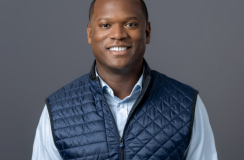
%20-%20thumbnail.png)

.png)
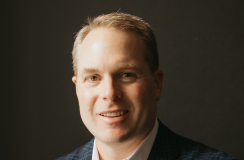
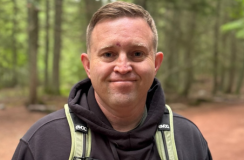


%20-%20thumbnail.png)
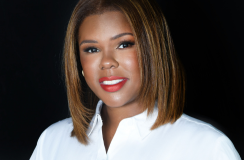

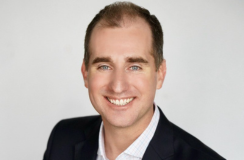
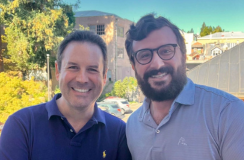
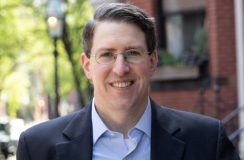


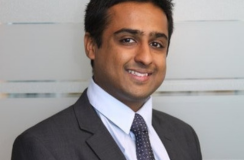
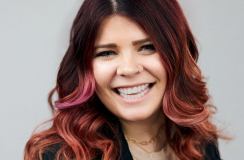
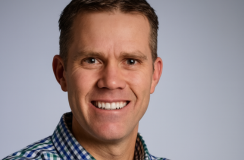
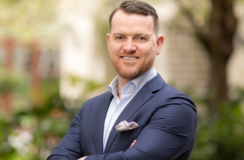



%20-%20thumbnail.png)

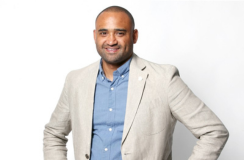
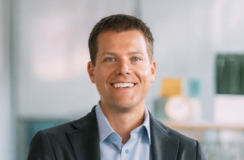

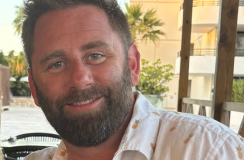
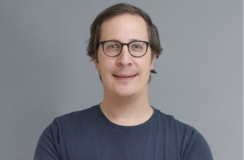
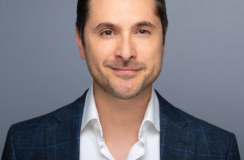
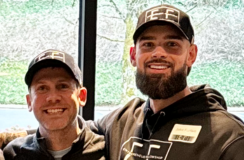
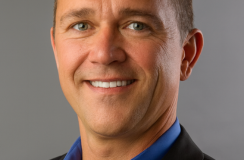
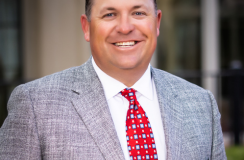
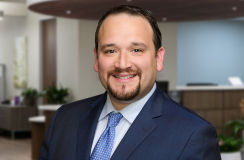
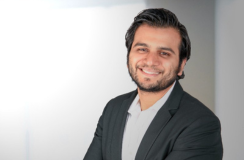
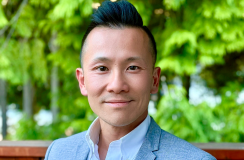
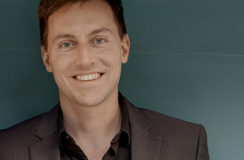
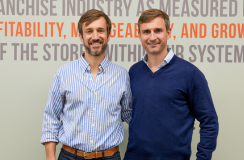




























































.png)



